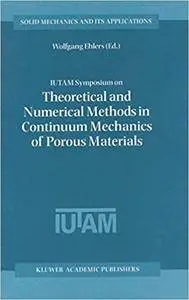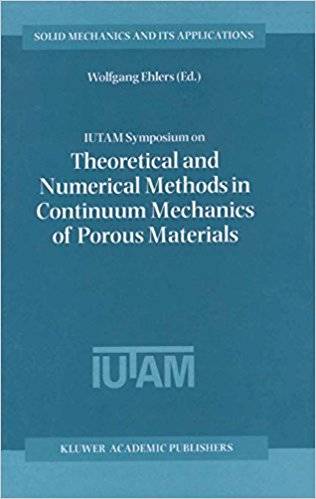Wolfgang Ehlers, "IUTAM Symposium on Theoretical and Numerical Methods in Continuum Mechanics of Porous Materials"
2001 | pages: 449 | ISBN: 0792367669 | PDF | 7,2 mb
2001 | pages: 449 | ISBN: 0792367669 | PDF | 7,2 mb
During the last decades, continuum mechanics of porous materials has achieved great attention, since it allows for the consideration of the volumetrically coupled behaviour of the solid matrix deformation and the pore-fluid flow. Naturally, applications of porous media models range from civil and environmental engineering, where, e. g. , geote- nical problems like the consolidation problem are of great interest, via mechanical engineering, where, e. g. , the description of sinter materials or polymeric and metallic foams is a typical problem, to chemical and biomechanical engineering, where, e. g. , the complex structure of l- ing tissues is studied. Although these applications are principally very different, they basically fall into the category of multiphase materials, which can be described, on the macroscale, within the framework of the well-founded Theory of Porous Media (TPM). With the increasing power of computer hardware together with the rapidly decreasing computational costs, numerical solutions of complex coupled problems became possible and have been seriously investigated. However, since the quality of the numerical solutions strongly depends on the quality of the underlying physical model together with the experimental and mathematical possibilities to successfully determine realistic material parameters, a successful treatment of porous materials requires a joint consideration of continuum mechanics, experimental mechanics and numerical methods. In addition, micromechanical - vestigations and homogenization techniques are very helpful to increase the phenomenological understanding of such media.
My Link



